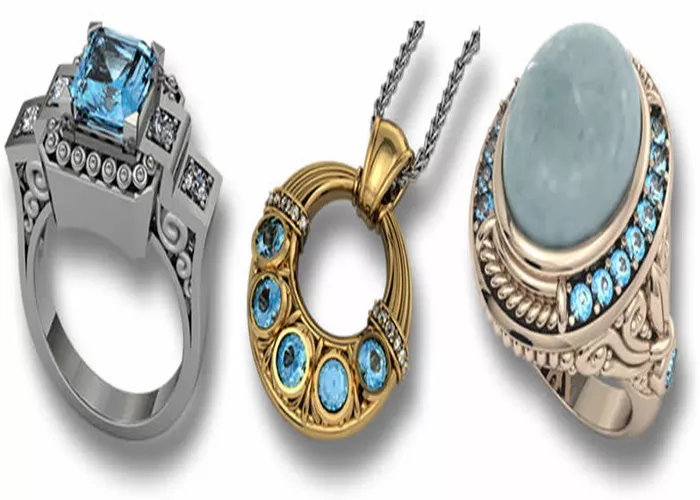Aquamarine is a beautiful gemstone known for its stunning blue color. Many people love it for its calming appearance. However, buying aquamarine can be tricky if you don’t know what to look for. There are many mistakes buyers make that can lead to disappointment. To help you make the best choice, here are the key things to avoid when purchasing aquamarine.
Avoiding Poor Quality Stones
One of the biggest mistakes is buying low-quality aquamarine. Not all stones are equal. Some have visible flaws, weak color, or poor cuts. High-quality aquamarine should have a clear, vibrant blue or blue-green hue. Avoid stones that look too pale or washed out. The best aquamarine has a rich, saturated color without being overly dark.
Another issue is inclusions. While some inclusions are normal, too many can weaken the stone. Avoid aquamarine with large cracks or cloudy areas. These flaws can make the gem less durable and less attractive. Always inspect the stone under good lighting before buying.
Cut is also important. A poorly cut aquamarine will not sparkle as much. Avoid stones with uneven shapes or bad proportions. A well-cut gem reflects light beautifully, enhancing its natural color.
Avoiding Fake or Treated Aquamarine
Some sellers try to pass off fake stones as real aquamarine. Glass or synthetic materials can look similar but lack the value of natural aquamarine. Always buy from a trusted jeweler who provides certification.
Many aquamarines are heat-treated to improve their color. This is a common practice and is generally accepted. However, some sellers do not disclose treatments. Avoid buying aquamarine if the seller cannot confirm whether it has been treated. Untreated stones with strong natural color are rare and more valuable.
Another trick is dyeing pale stones to make them look more vibrant. Dyed aquamarine is not as valuable and may fade over time. Look for uneven color patches, which can be a sign of dyeing.
Avoiding Overpriced Aquamarine
Pricing for aquamarine can vary widely. Some sellers charge too much for average-quality stones. To avoid overpaying, compare prices from different jewelers. Research the current market value based on color, clarity, and size.
Large aquamarines are not always better. Bigger stones may have weaker color or more inclusions. A smaller, high-quality aquamarine is often a better investment than a large, low-quality one.
Be cautious with branded names. Some sellers use fancy names to justify higher prices. Unless the stone comes with a reputable certification, these names may not mean much. Stick to standard grading terms like color, clarity, and cut when evaluating price.
Avoiding Bad Settings and Jewelry Designs
Even a beautiful aquamarine can look bad in a poor setting. Avoid weak or thin metal settings that may bend or break. Aquamarine is relatively durable but still needs proper protection. A sturdy setting, like a bezel or prong design, helps keep the stone secure.
Some jewelry designs do not complement aquamarine well. Avoid settings with clashing colors or overly complicated designs. The best jewelry enhances the stone’s natural beauty without overpowering it. Simple, elegant designs often work best.
Also, consider the metal color. White gold and platinum make the blue tones stand out. Yellow gold can create a nice contrast but may not suit every aquamarine. Avoid metals that clash with the stone’s color.
Avoiding Poor Maintenance Habits
Aquamarine is not as hard as diamonds or sapphires, so it requires proper care. Avoid exposing it to harsh chemicals, such as cleaning products or chlorine. These can damage the stone or its setting.
Ultrasonic cleaners are sometimes safe for aquamarine, but they can loosen settings or worsen existing cracks. Avoid using them unless you are sure the stone is stable. Instead, clean aquamarine with mild soap and warm water.
Storing aquamarine improperly can also cause damage. Avoid tossing it in a jewelry box where it can scratch against other gems. Keep it in a soft pouch or a separate compartment.
Avoiding Unreliable Sellers
Not all jewelers are honest. Some may misrepresent the quality or origin of their aquamarine. Avoid sellers who refuse to provide details about the stone’s source or treatment history. Always ask for a gemstone certificate from a trusted lab.
Online purchases can be risky if the seller does not offer clear photos or return policies. Avoid buying aquamarine from unknown websites with poor reviews. Look for sellers with good reputations and customer feedback.
Auctions can also be tricky. Without proper inspection, you might end up with a low-quality stone. Avoid bidding on aquamarine unless you can verify its condition beforehand.
Avoiding Trends That Lower Value
Some jewelry trends can make aquamarine lose appeal over time. Avoid overly trendy designs that may go out of style. Classic cuts and settings retain value better.
Fashion colors can also affect aquamarine’s popularity. While blue is always in demand, certain shades may fade in trendiness. Avoid buying stones with unusual colors unless you truly love them.
Conclusion
Buying aquamarine can be a wonderful experience if you know what to avoid. Always choose high-quality stones with good color and clarity. Be cautious of fake or treated gems and avoid overpaying. Pick a secure setting and care for your aquamarine properly. Finally, buy from trustworthy sellers to ensure you get a genuine, beautiful gem. By following these tips, you can enjoy your aquamarine for years to come.
- What To Avoid Aquamarine: A Complete Guide
- Discover the Beautiful Birthstone for March 31: Aquamarine
- How to Choose the Perfect Aquamarine Ring ?


